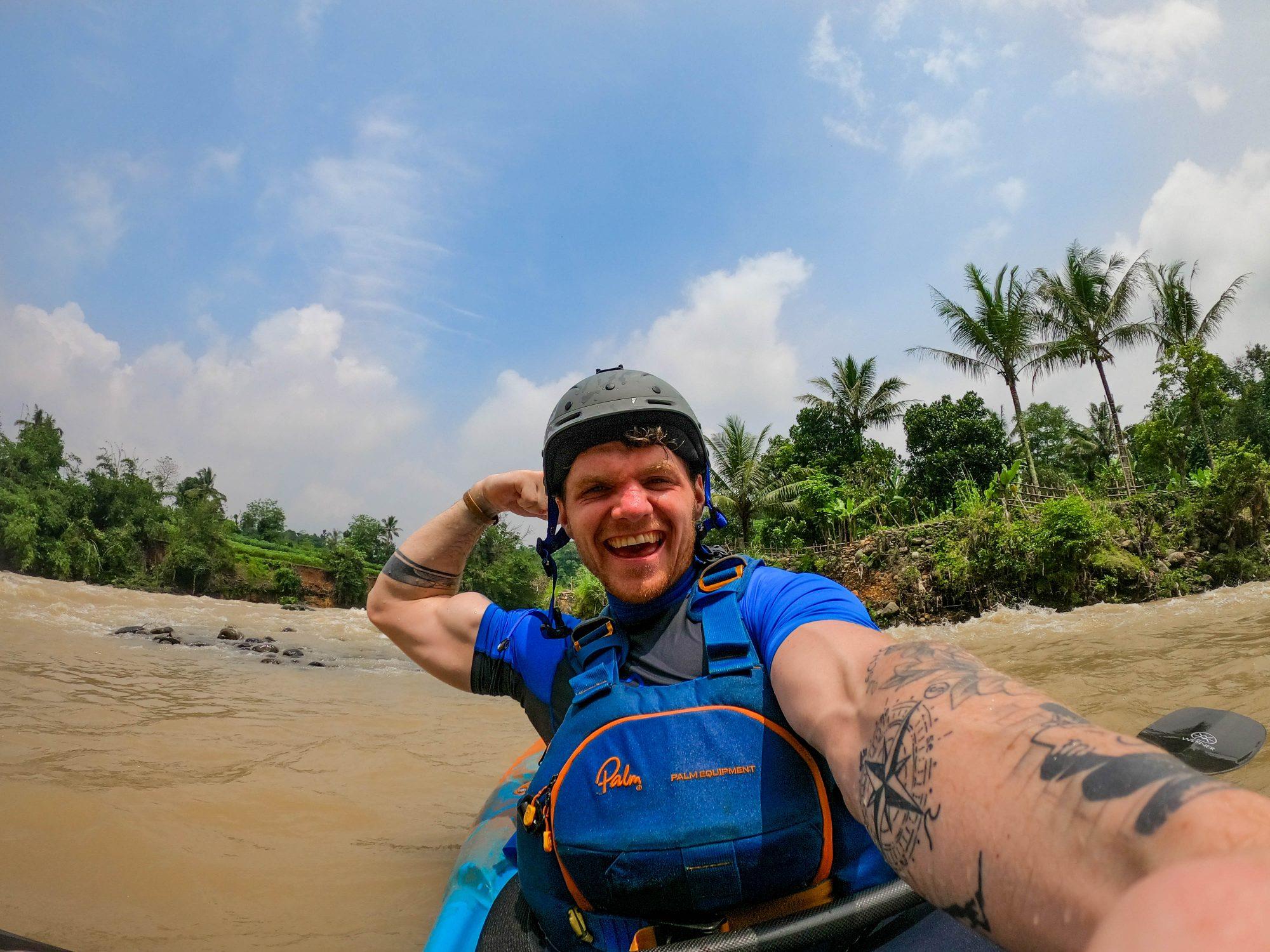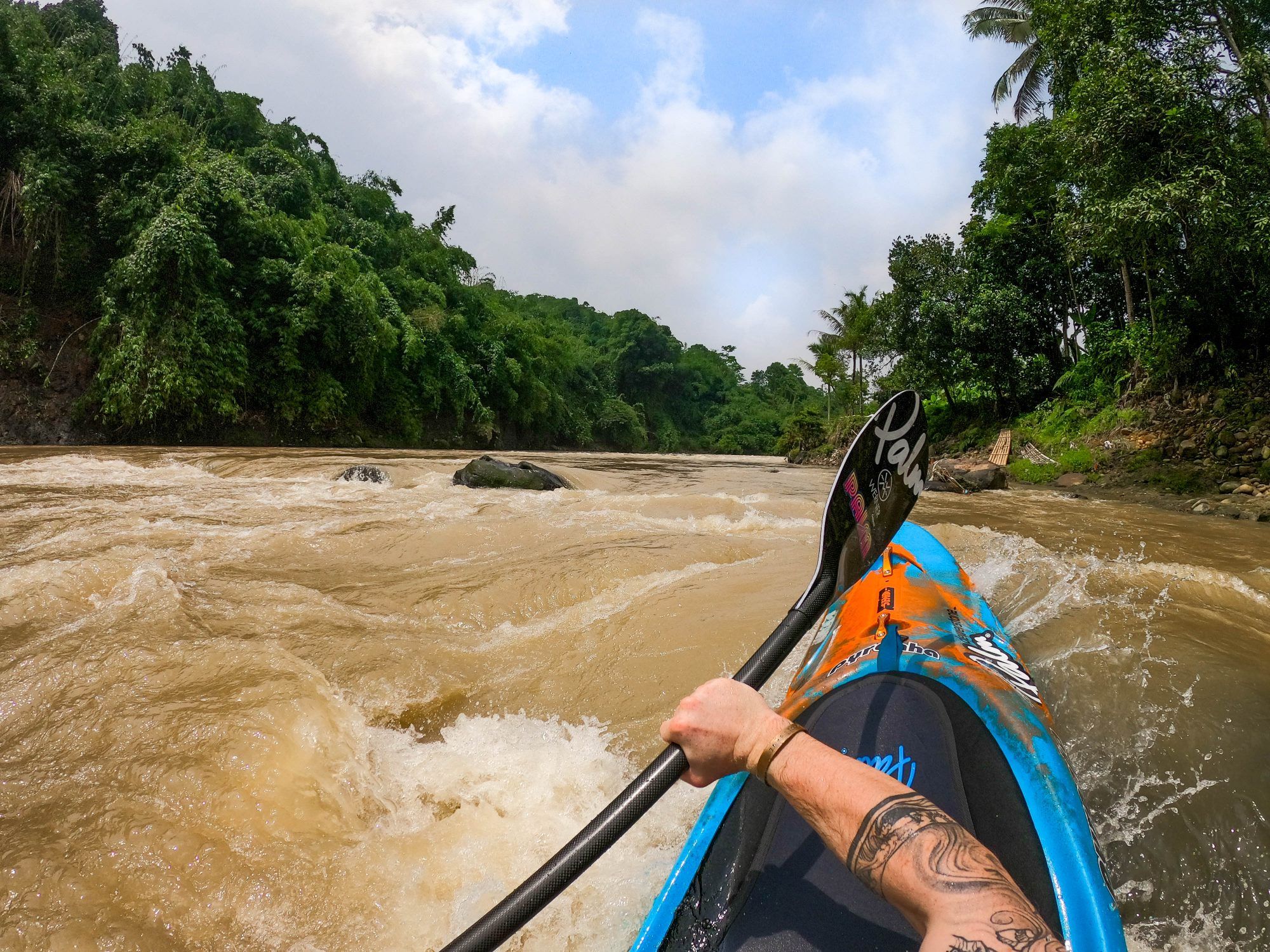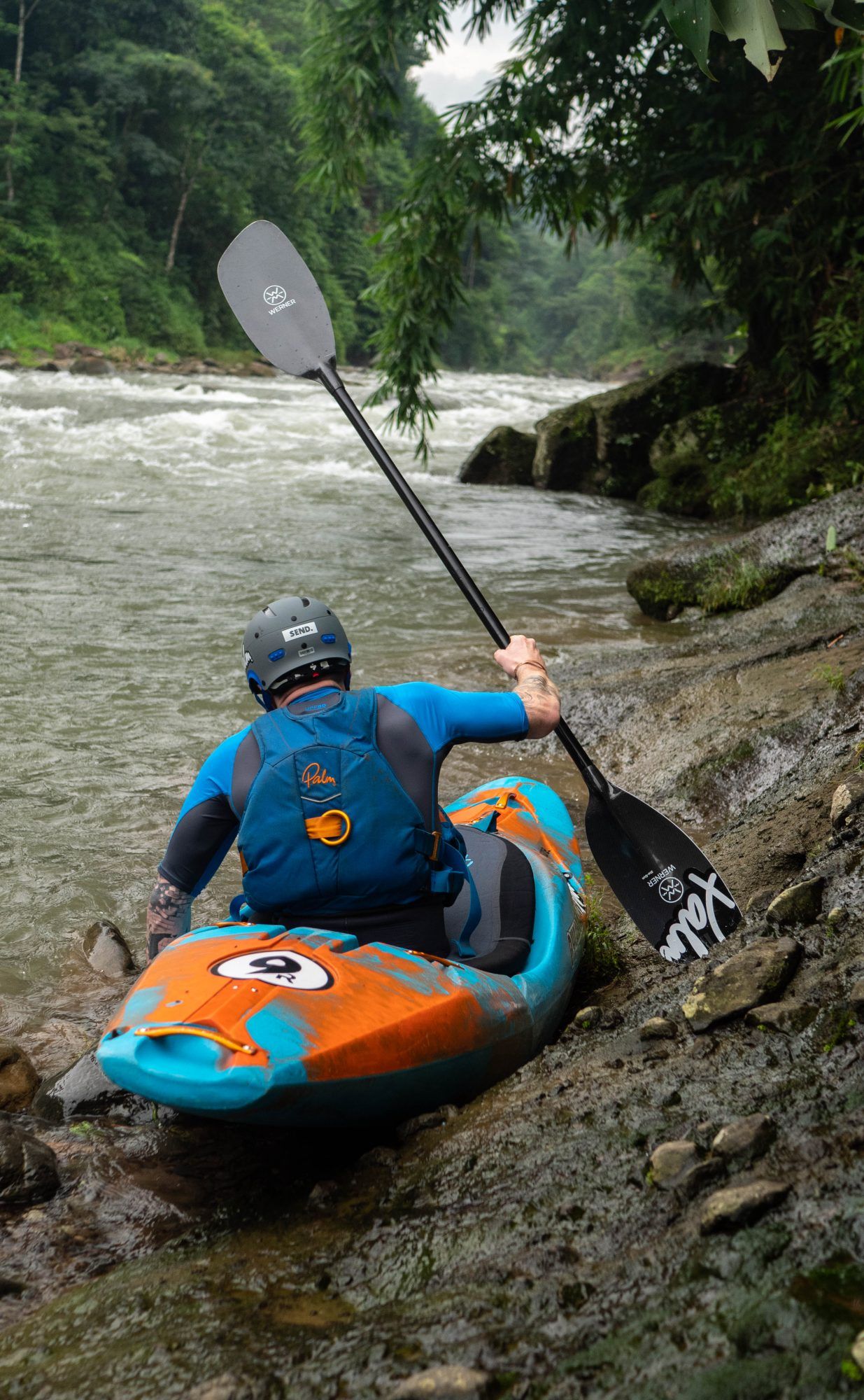I’ve been staked out in Indonesia, waiting for the right moment for my crew to bag the first decent of a beautiful waterfall in the jungle. buy tramadol online We’re waiting out the monsoon rains about a forty minutes drive away from the drop at a local rafting base. It’s a great location, albeit with a leaking roof with droplets occasionally splashing onto my keyboard as I write. The river here is class II – III (but not good whitewater) and there’s a lot of faff involved to set shuttle and get to the top of the section, but my love of kayaking is boundless and my motivation to do something other than sit in a car is pretty high at the moment.
Fortunately, I found an alternative. I geared up at the base, walked down to the river and started kayaking back upstream. Climbing from one eddy to another, challenging and tiring myself out in the same amount of time it would have taken to drive to the top of the river. Delightful, brilliant, well good. This form of kayaking is called ‘attaining’ and it is massively popular in some parts of America but it is rarely practiced elsewhere.
I like it for the following reasons:
It allows you to see the river from a different angle – seeing what is going on at the tramadol backside of the features you normally kayak down is a good way to grow your ability to read whitewater. It can be surprising sometimes what allows a river feature to form.
It helps you to understand different speeds of water – understanding where fast water and slow water form is important for a lot of reasons; it allows you to predict what river features are coming up, helps you to maintain your position in the group while river running, and go fast down the river if you’re into that.
It challenges you to think about how to place your kayak – I often describe whitewater as a jigsaw, your kayak is the missing piece and to have smooth lines you have to slot it into place. When attaining making it from one eddy to the next depends so much on the angles that you leave and enter the eddies at.
It replicates some of the physical needs to kayak hard whitewater – by this I mean that when I am kayaking down hard whitewater often I have to put powerful strokes in on edge and times where I need to make a move when I am tired. Making a move happen when you are tired and your muscles are lactic is, in my opinion, one of the most important and under-practiced things by whitewater kayakers. Slalom kayakers do a great job of practicing this.
It is a bloody good workout – as it says on the tin, it is just a brilliant way to get your heart rate up and practice taking powerful strokes.

Here’s hoping the rain comes soon and I can let the cat out of the bag on this first descent, it is a wild one. – Bren

